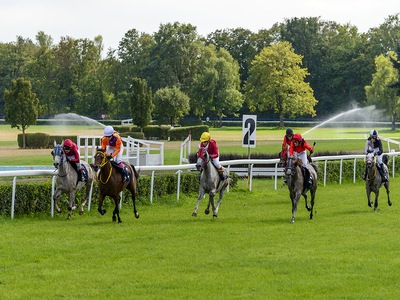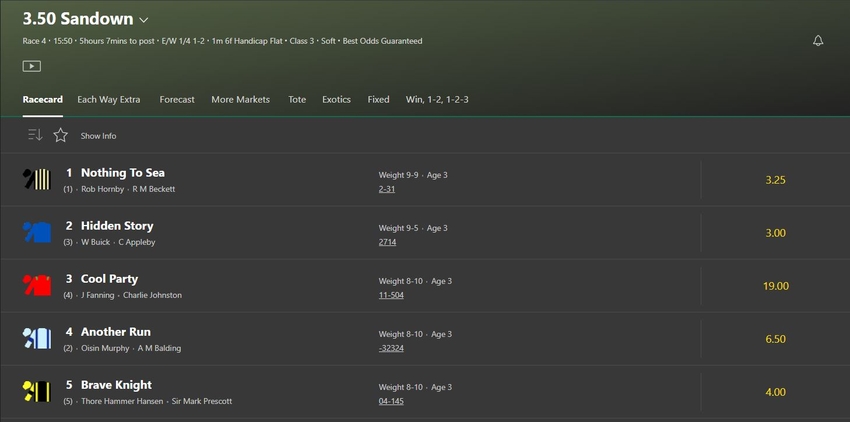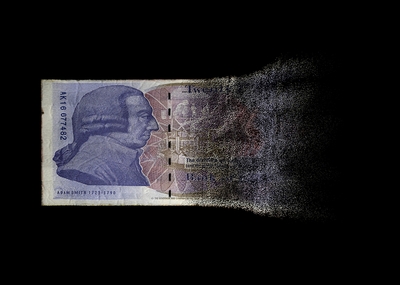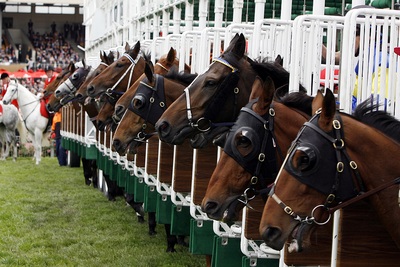 Average field sizes are falling in UK racing, that’s an undeniable fact.
Average field sizes are falling in UK racing, that’s an undeniable fact.
The British Horse Racing Authority began keeping records in 1995, and in 2022 average field sizes hit their lowest figure since records began.
This damages every part of the industry, from bookmakers to owners and trainers, not to mention the racecourses themselves, and even the punters.
Fewer horses mean less money, and less money means smaller purses, and this in turn means fewer horses will be entered into each race, creating a nasty downward spiral that would kill the sport completely if it continued.
We’re not there yet, far from it, but there is undoubtedly a problem to be solved here.
Problems can’t be solved until we understand what is causing them though, so let’s look at a few stats and then talk about why this is happening in the first place.
Frequency of Races with Fewer than 6 Runners

The alarming thing about the statistics in this area isn’t just that we have hit record numbers of races with fewer than 6 runners, but that the number of races with less than 6 runners has been increasing year on year since 2018 (save for 2020, but COVID skews the data there).
This shows that the problems are persistent, and the trend is a long running one.
It’s worse for jumps than for flat racing, but in total, 18.68% of all races had fewer than 6 runners in 2022.
If we look back a few years we can see this steady increase occurring:
| Year | # Races | Races < 6 Runners | % Races < 6 Runners |
|---|---|---|---|
| 2022 | 10,216 | 1,908 | 18.68% |
| 2021 | 10,353 | 1,589 | 15.35% |
| 2020 (COVID) | 7,882 | 769 | 9.76% |
| 2019 | 10,086 | 1,439 | 14.27% |
| 2018 | 10,406 | 1,472 | 14.15% |
There is something of a silver lining if we look at the difference between jumps and flat racing – although it is a very faint silver lining.
While the number of races with less than 6 runners in jumps racing overall topped out at 28.02% in 2022, higher than it has ever been before, the number of races with fewer than 6 runners on the flat was 12.95%, which is actually down from 13.17% in 2021.
So the staggeringly high percentage of jumps races with small fields is driving up the overall average, but the flat racing stats are being helped out by AWT courses.
You see, flat races on turf had fewer than 6 runners in 15.61% of races in 2022, which is up on the previous year by about 0.84%; but interestingly, the figures for races on all weather tracks are much lower.
Just 9.13% of races at AWT courses had fewer than 6 runners, down 1.7% from 2021 figures. We will discuss the potential reasons for this in the next section, but could it be that owners and trainers are happier to race their horses at AWT courses because they don’t suffer the same effects from global warming?
Here is the 2022 data we have been talking about in an easier to digest format:
| Race Type | # Races | Races < 6 Runners | % Races < 6 Runners |
|---|---|---|---|
| Jump (overall) | 3,878 | 1,087 | 28.03% |
| Hurdle | 2,109 | 430 | 20.39% |
| Chase | 1,429 | 589 | 41.32% |
| Flat (overall) | 6,338 | 821 | 12.95% |
| Turf | 3,741 | 584 | 15.61% |
| AWT | 2,597 | 237 | 9.13% |
Look at those numbers for steeple chases – over 41% of races had fewer than 6 runners.
This number was holding around the 30% mark in previous years but has shot up over 10% in 2022, showing that owners and traders are keeping their more experienced horses away, or potentially sending them to compete elsewhere.
There have always been fewer runners on average in steeplechases, but the gap has never been this wide before.
It was back in 1995 when records began that the next highest figure was recorded, that being 37.21%, but only in 8 of the 27 years from 1995 to 2021 has the average been above 30%, and in 5 of those years it actually dipped under 20%, falling as low as 14% in 2005, 2006, and 2008.
Meanwhile, the percentage of hurdle races with fewer than 6 runners stayed sub-10% from 2001 until 2013 (apart from a blip in 2003), bottoming out at just 2.98% in 2005.
It was around 2014 that things started to go wrong and the numbers have pretty much doubled since then.
Why are Field Sizes Falling in UK Racing?
 There are a couple of reasons, with money being the main one.
There are a couple of reasons, with money being the main one.
It’s not the only factor, however, as global warming is starting to have an impact too. You can roll your eyes at that if you want to, but we have had warmer weather making the ground firmer, and trainers have been reluctant to race their nags on ground that is too hard, especially when it comes to younger horses.
This goes back to the point we made about all weather tracks seeing by far the fewest races with small field sizes. It seems that owners and trainers are happier to race their horses on these surfaces than on turf.
Another potential issue is that racing is being spread too thin. If there were fewer races on the same days, maybe those races would have more runners? This is partly down to poor scheduling, and partly down to the decline in spectators turning up at the races in the first place, because
The real issue is prize money though.
Prize money has been on the decline for years, dropping 11% between 2018 and 2021 alone.
In fact, the UK is home to just 6 of the world’s richest 100 races, with countries like Australia, the US, Hong Kong, and Japan hosting the lion’s share.
Even in our bigger Group 1 races, the average prize pales in comparison to that in other big horse racing nations:
- United Arab Emirates – £1.5 million+
- Hong Kong – £1 million+
- Australia – £438,000+
- UK – £302,000+
Remember, that’s the very top end races, a wet Wednesday in Ayr can be just a few thousand pounds for the owners once everyone else has taken their share.
The UK is still seen as one of the best places to train race horses, but increasingly, owners are training them here then shipping them off to race for more lucrative purses in other countries, and who can blame them?
This all has an impact on the number of horses we see running in an average race in the UK. It’s getting to the point where, for some horses and some races, it’s just not worth the expense of showing up.
How Can Field Sizes be Improved?
 The issue comes down to money, but the money can only be improved by more horses being raced and bigger crowds showing up and betting on them.
The issue comes down to money, but the money can only be improved by more horses being raced and bigger crowds showing up and betting on them.
Much of the prize money comes from the horse racing levy, which is directly linked to bookmaker’s profits, and sponsorship and advertising, which is directly linked to the sport’s popularity.
If the races are less competitive and less interesting to watch, fewer people will watch them and so advertisers will not be willing to pay as much in sponsorship etc. What’s more, a lot of the advertising comes from bookmakers so it’s a double problem in that respect.
What’s more, if fewer people are watching and attending the races, then fewer bets will be made, reducing the bookies’ profits, and therefore reducing the levy and the amount they are willing to spend on advertising.
This drives the prize purse down, which reduces the number of horses being entered, which means more short priced favourites because the races are less competitive, fewer places being offered which again reduces the number of bets being made…
As you can see, it’s all linked together in such a way that a drop off in one area can quickly bring the whole thing down.
So what to do?
Well, some suggestions have included reducing the number of races rated 80-100 since this is where the field sizes are the lowest.
Another would be to reduce the number of jumps races over the summer or to extend the summer break.
In both cases, they would be reducing supply to increase demand; fewer races but the same number of horses wanting to race means bigger field sizes.
This might work to a point, but something bigger is probably needed to make a significant difference in the long term, possibly even a complete rethink about how racing is funded in the first place.
